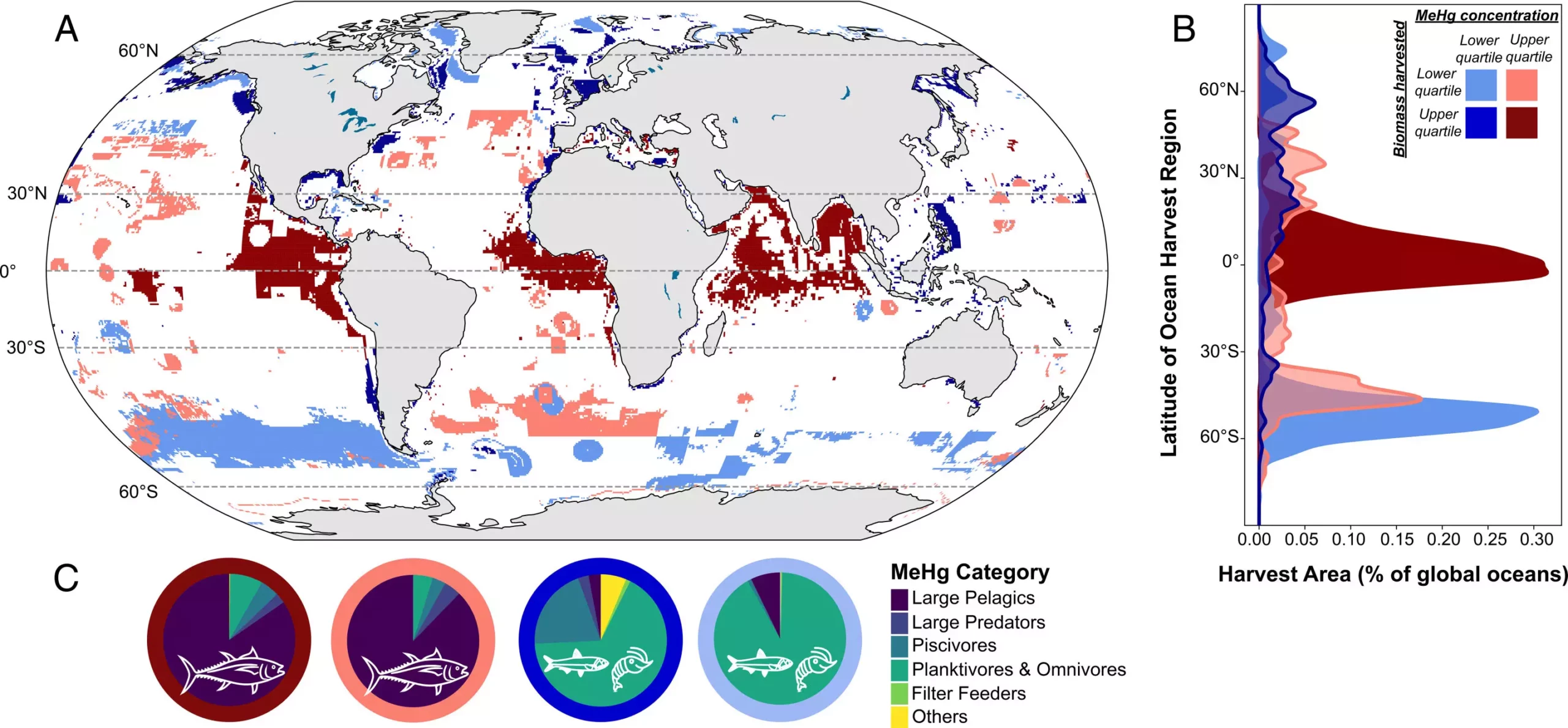As the world increasingly relies on seafood for sustenance, particularly large pelagic fish like tuna, a concerning relationship between industrial fishing practices and human health has come to the fore. Research conducted by the Harvard John A. Paulson School of Engineering and Applied Sciences, in collaboration with esteemed universities, sheds light on methylmercury exposure due to these fishing practices. The findings reveal that more than 70% of the methylmercury fished from the ocean comes from industrial fisheries targeting large fish in tropical and subtropical waters. This article delves into the implications of this research, the biochemical processes involved, and the grave consequences for human health and the environment.
The demand for large pelagic seafood has surged dramatically over the past few decades, primarily fueled by technological advancements in industrial fishing. Innovations such as onboard freezing and fish aggregating systems have boosted tuna catches significantly since the 1980s, making these fish readily available in grocery stores worldwide. The global market has thus embraced tuna as a dietary staple, raising concerns due to the alarming levels of methylmercury these fish harbor.
As markets for these species grow, they inadvertently contribute to a diet that contains higher concentrations of neurotoxins. Given the rising popularity of tuna and other similar species, it is critical to not only address the market trends but to also examine the ecological ramifications of favoring such toxin-laden seafood in our diets.
Methylmercury is one of the most insidious forms of mercury, a heavy metal widely present in the environment. Emission sources typically include coal-fired power plants, mining operations, and various industrial activities, along with natural phenomena such as volcanic eruptions. Once released into the atmosphere, mercury precipitates into oceans and waterways where microorganisms convert it into methylmercury.
The research highlights that the tropical and subtropical regions are particularly prone to high methylation rates, primarily due to warmer water temperatures that favor the formation of this toxic compound. Notably, methylmercury is notorious for biomagnifying in food webs, meaning that organisms higher up the chain, such as large predatory fish like tuna, accumulate exponentially more methylmercury than their smaller counterparts. This presents a clear pathway of exposure for humans who consume these fish, particularly those from vulnerable populations.
The ramifications of consuming large pelagic fish are stark. Methylmercury is closely tied to serious health issues, including neurodevelopmental impairments in children and cardiovascular complications in adults. As various demographics consume higher amounts of tuna and similar fish, the risks of these health conditions increase in tandem. This situation presents a significant concern, particularly among subsistence fishers, who rely more heavily on local seafood for their dietary needs.
According to the research, an astounding 84% to 99% of subsistence fisheries worldwide likely exceed established methylmercury exposure thresholds. These communities, often marginalized and unprotected from the influences of industrial pollution, face dire consequences without any responsibility for the pollution itself. This finding underscores social and environmental justice issues, highlighting that the most vulnerable populations are often those most affected by global practices they have little control over.
With a clearer understanding of the health impacts stemming from methylmercury exposure, it’s time to explore alternative sources of nutrition. The research advocates for the consumption of small pelagic fish, such as sardines and anchovies. These fish not only boast a lower methylmercury concentration but also provide higher levels of beneficial nutrients like omega-3 fatty acids.
By shifting consumer demand away from large pelagic fish, stakeholders can drive the market toward healthier options that sustain both human health and marine ecosystems. Furthermore, the research invites scrutiny of fishing practices globally, encouraging regulations that minimize methylmercury exposure while promoting sustainable and equitable fishing practices.
As the consequences of industrial fishing practices on methylmercury exposure become clearer, we stand at a crossroads. It is incumbent upon individuals, policymakers, and industry stakeholders to acknowledge the intricate relationships between human health, environmental practices, and dietary choices. The journey towards transparency, sustainable practices, and healthier populations begins with informed decisions and collaborative action aimed at protecting both people and ocean health. The urgent need to address these issues cannot be overstated, as the repercussions of inaction will continue to echo through generations.


Leave a Reply